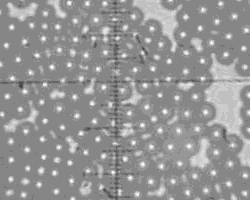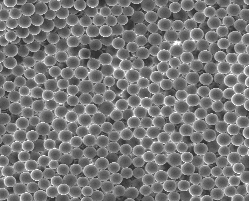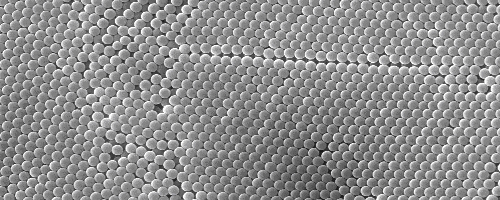MonoPS Microsphere
Description
Microsphere Composition: Polystyrene(PS), Polystyrene Divinylbenzene (PSDVB), or other styrene copolymers
Form : Aqueous dispersion
Approximate Concentration (W/V): 5% solids
Sodium Azide Concentration :
50 ppm
Surfactant : <0.1% (W/V) or None
Physical Data
Nominal Diameter(micron) : 0.1, 0.2, 0.3, 0.4, 0.5, 0.8, 0.9, 2, 3, 4
Density : 0.95 to 1.05 g/cm3
Refractive Index: 1.59 @ 589 nm,
25℃
Physical and Chemical Properties
PS: Hydrophobic surface; Low temperature resistance up to 100
℃; Without cross-linking, soluble in aromatic hydrocarbons(benzene, toluene, xylene), acetone and MEK; insoluble in acids, bases, alcohol.
PS-DVB: Hydrophobic surface; Low temperature resistance up to 100
℃; Cross-linking, dissolved in Methyl Ethyl Ketone(MEK), toluene and xylene over time; insoluble in acids, bases, alcohol.
Example Image
Optical microscope(x1000) SEM(x500)
4.6um Polystyrene Microsphere
390nm Polystyrene microsphere
Storage and Handling
Before sampling, manually shake and/or expose it to ultrasonics until the spheres are uniformly distributed. Then take a sample from the vial. Use filtered distilled water for dilution. When electrolytes are used for electrical sensing zone counter measurements, first dilute the sample with water to prevent agglomeration.
The unit is stored at room temperature or refrigerated. The vial is sealed tightly. Once the cap has been removed, care should be taken to prevent contamination. Don't remove dropper tip.
Features and Application
1.Non-specific adsorption of proteins;
2.Non-covalent binding of specific antibodies,antigens or cells;
3.Immunoassays(Latex agglutination test,particle base enzyme immunoassays);
4.Nephelometric assays and turbidimetric assays;
5.Optical Tweezer Manipulation;
6.Support of enzyme immobilization;
7.Aerosol studies;
8.Covalent attachment of proteins to surface modified particles;
9.Calibration standards of flow cytometers,particle and hematology analyzers,zeta-potential measuring instruments;
10.Templates for preparing hollow capsules by self-organized deposition of particles.
11.Used as particle standards as well as tracers in environmental science, flow visualization and measurements in gases and liquids like Laser Doppler Anemometry (LDA), Particle Dynamics Analysis (PDA), Particle Image Velocimetry (PIV), Digital Imaging Velocimetry (DIV) and Laser Speckle Velocimetry (LSV).



